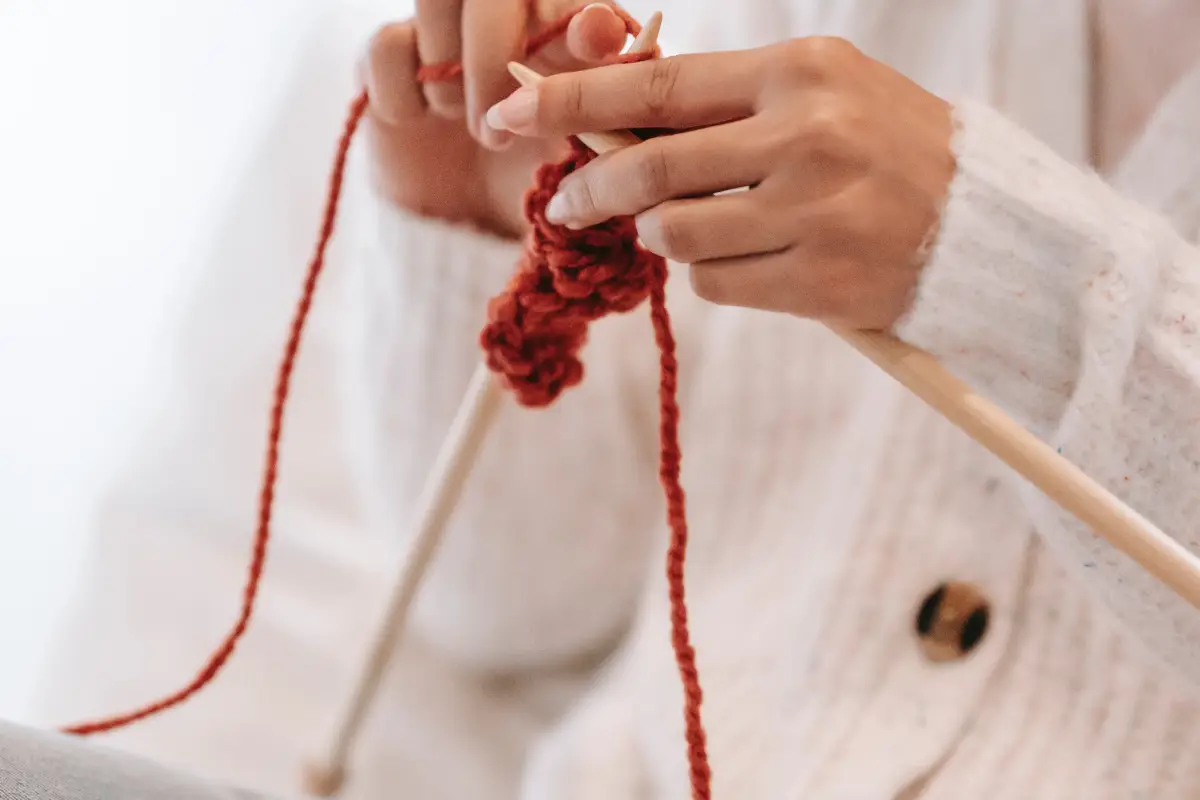This post has already been read 31 times!
Knitting in the round can seem daunting, but it opens up a world of creative possibilities. Whether you’re crafting a cozy hat, seamless sweater, or intricate socks, learning to use circular and double pointed needles (DPNs) is essential. In this blog post, we’ll explore the basics, benefits, and differences between these two types of needles, helping you choose the right tools for your next project.
Why Knit in the Round?
Knitting in the round is a technique that creates a continuous tube of fabric. This method is perfect for projects like hats, mittens, socks, and more. It eliminates the need for seams, resulting in a cleaner finish. Plus, many knitters find it faster and more efficient, as you only work on the right side of the fabric.
Circular Needles and Double Pointed Needles are the two primary tools for this technique. Let’s delve into what makes each unique and when to use them.
Circular Needles: Versatility and Ease
Circular needles consist of two short needle tips connected by a flexible cable. They come in various lengths and materials, making them versatile for many projects. The needles’ cable holds the stitches, allowing you to knit comfortably without worrying about them slipping off.
Advantages of Circular Needles
Versatility: You can use circular needles for flat and round knitting. They’re great for large projects like blankets or shawls.
Even Tension: The cable distributes the weight of your work evenly, reducing strain on your wrists and hands.
Portability: Circular needles are compact and easy to carry, perfect for knitting on the go.
Think about the last time you made a chunky winter scarf. Using circular needles, you can create a continuous loop without worrying about sewing seams. It’s like magic when your project comes together seamlessly!
Choosing the Right Length
The length of the circular needle’s cable depends on your project’s size. For example, use a shorter cable for a hat (16 inches) and a longer one for a sweater’s body (24 inches or more). The right length ensures smooth knitting and prevents your stitches from stretching too much.
Double Pointed Needles (DPNs): Perfect for Small Projects
Double pointed needles, or DPNs, are a set of five short needles. Unlike circular needles, they have points at both ends, allowing you to knit in the round without a cable. DPNs are ideal for smaller projects like socks, sleeves, or the top of a hat, where the circumference is too small for circular needles.
Advantages of Double Pointed Needles
Precision: DPNs are perfect for intricate patterns or shaping, like turning the heel of a sock.
Flexibility: They’re great for knitting small circumferences, where circular needles might be too cumbersome.
Traditional Feel: Many knitters enjoy the tactile experience of using DPNs, which feels more traditional and hands-on.
Imagine knitting a pair of cozy wool socks. With DPNs, you can easily shape the toe and heel, creating a snug fit. The sense of accomplishment when you finish the second sock is unbeatable!
How to Use DPNs
Using DPNs can be tricky at first, but practice makes perfect. You’ll work with three or four needles holding your stitches, while the fifth is the working needle. It might feel awkward initially, but you’ll get the hang of it with time.
Circular Needles vs. Double Pointed Needles: Which to Choose?
The choice between circular needles and DPNs often comes down to personal preference and project requirements. Circular needles are versatile and great for large projects, while DPNs excel at small, detailed work. Some knitters even use both, starting a project on circular needles and switching to DPNs as the circumference decreases.
Consider knitting a hat. You could start with circular needles for the brim and body, then switch to DPNs for the crown’s shaping. This method allows for a seamless transition and ensures a neat finish.
Tips for Success in Knitting in the Round
Start Simple: Begin with an easy project, like a hat or cowl, to get comfortable with the techniques.
Use Stitch Markers: Place markers at the beginning of your round to keep track of your work and avoid confusion.
Practice Tension: Keep your tension even to prevent gaps between needles when using DPNs.
Common Mistakes and How to Avoid Them
Laddering: This happens when loose stitches form between needles on DPNs. To avoid this, pull the first stitch on the new needle tight.
Twisting Stitches: When joining to work in the round, ensure your stitches aren’t twisted. A twist will ruin the continuity of your fabric.
A knitter once shared how she accidentally twisted her stitches when joining in the round, turning her hat into a Möbius strip. It was a funny mistake but a valuable lesson in being careful at the start!
Conclusion
Knitting in the round is a rewarding skill that can elevate your projects. Whether you prefer circular needles’ versatility or DPNs’ precision, mastering both will expand your knitting repertoire. Start with a simple project, practice, and don’t be afraid to experiment. Happy knitting!
We’d love to hear about your experiences with knitting in the round! Have you tried using circular needles or DPNs? Share your favorite projects and tips in the comments below. Let’s inspire each other to keep creating beautiful handmade pieces!

